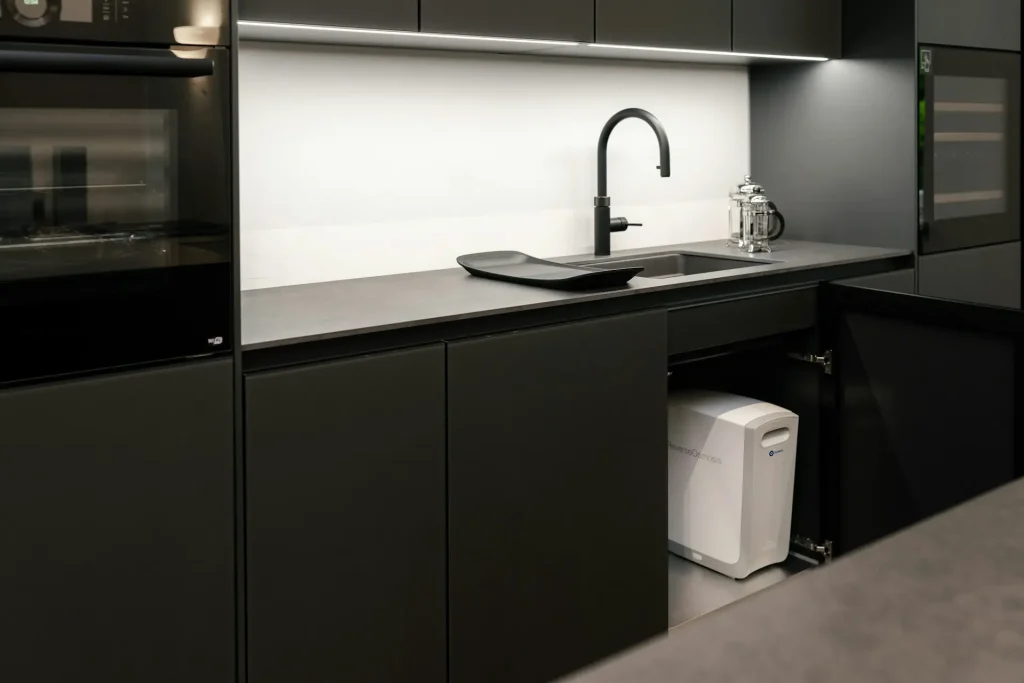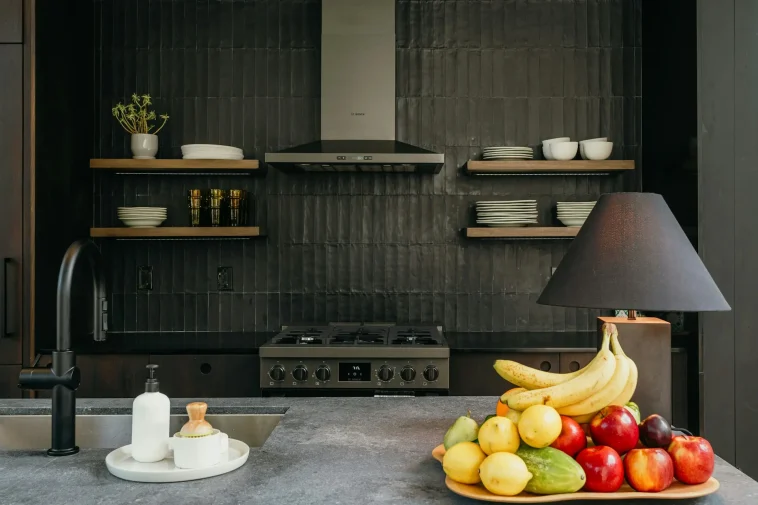Let’s be honest – black kitchens aren’t just challenging the status quo; they’re completely rewriting the rules of kitchen design. After decades of white cabinets dominating our culinary spaces, black has emerged as the choice for those who dare to be different. Think of it as the culinary equivalent of a well-tailored black suit: timeless, sophisticated, and surprisingly versatile.
The Technical Brilliance
The magic of black kitchens lies in their ability to transform spaces in unexpected ways. While white kitchens reflect light uniformly, black surfaces create depth and drama, playing with light in ways that change throughout the day. The key is understanding that black isn’t just black – it’s a spectrum of possibilities.
Modern manufacturers, particularly those specializing in German kitchen furniture, have mastered the art of black finishes. They’ve developed surfaces that combine practicality with stunning aesthetics, offering everything from deep matte finishes that hide fingerprints to high-gloss surfaces that create mirror-like reflections.
A Case Study: The Thompson Renovation
Sarah Thompson’s Victorian townhouse renovation in Boston serves as a perfect example of how black kitchens can transform spaces. “Everyone told me I was crazy to choose black in a period property,” she recalls. “But I knew I wanted something that would honor the home’s history while feeling contemporary.”
Working with her designer, Sarah chose deep charcoal cabinets with a subtle texture, pairing them with marble countertops featuring dramatic veining. The original bay windows, now restored to their full glory, flood the space with natural light that plays beautifully off the dark surfaces. “The kitchen changes character throughout the day,” Sarah notes. “In the morning, it’s bright and energizing; by evening, it becomes this incredibly cozy, intimate space.”
The Practical Truth
Contrary to popular belief, black kitchens can be surprisingly practical. While white surfaces immediately show every speck of dust and every fingerprint, black surfaces are more forgiving. The key lies in choosing the right finish for your lifestyle. Textured or matte surfaces hide daily wear better than high-gloss options, though they may require different cleaning approaches.
Temperature management has become an interesting consideration in black kitchens. These spaces tend to absorb and retain heat more effectively than their lighter counterparts. In colder climates, this can be a bonus, reducing heating needs during winter months. However, in warmer regions, proper ventilation and cooling become crucial considerations in the design phase.
Design Integration
The true artistry of black kitchens lies in their integration with other elements. Natural wood brings warmth and softens the dramatic impact of black surfaces. Metallic accents – whether brushed brass, copper, or stainless steel – create points of visual interest and prevent the space from feeling monotonous. Natural stone, particularly with dramatic veining patterns, adds texture and movement.

Making It Work
Success with black kitchens lies in understanding light management. Natural light becomes your best friend, transforming black surfaces throughout the day. Strategic artificial lighting is equally crucial – under-cabinet lights, pendant fixtures, and even subtle LED strips can create layers of illumination that bring the space to life.
Consider breaking up large expanses of black with contrasting elements. This might mean incorporating glass-front cabinets, open shelving, or contrasting countertops. The goal isn’t to minimize the impact of black but to create a balanced, livable space.
The Investment Perspective
From a property value standpoint, black kitchens are increasingly seen as a premium feature. Real estate agents report growing buyer interest, particularly in urban markets and high-end properties. “A well-executed black kitchen can be a significant selling point,” notes real estate agent Michael Chen. “It signals sophistication and attention to detail.”
Future-Proofing Your Design
Black kitchens aren’t new – they’re newly appreciated. European designers have been incorporating black into kitchen designs for decades, suggesting this is more than just a passing trend. The key to longevity lies in choosing quality materials and timeless design elements.
The adaptability of black kitchens is one of their strongest features. As design trends evolve, black provides a sophisticated backdrop that can be updated through simple changes in hardware, accessories, or lighting. This flexibility makes them a smart long-term investment.
The Bottom Line
Creating a black kitchen requires confidence – not in the color’s ability to look good, but in your willingness to break from convention. These spaces aren’t trying to be practical (though they surprisingly are); they’re aiming to be extraordinary.
Sarah Thompson’s final thoughts on her black kitchen renovation resonate: “It’s not just about the color – it’s about creating a space that reflects a different way of thinking about home. Every morning when I walk in, it feels special, different, and exciting. That’s what good design should do.”
In a world where personalization is increasingly valued, black kitchens offer an opportunity to create spaces that are both dramatic and deeply personal. They challenge our assumptions about what a kitchen should look like while providing a sophisticated canvas for self-expression.
The question isn’t whether black kitchens are here to stay – they’ve proven their staying power. The real question is: Are you ready to embrace the dark side of kitchen design? Your perfect black kitchen might be closer than you think.
Final Thought: A black kitchen isn’t just a design choice – it’s a statement about how we live now. Bold, dramatic, and unafraid of a little darkness. What’s holding you back from making the leap?




